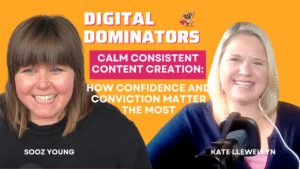Design thinking is a human-centered approach to innovation that combines the needs of people, technological possibilities, and business requirements. This methodology, applicable across various fields, follows a five-stage process: empathize, define, ideate, prototype, and test. Empathy forms the basis of design thinking, requiring understanding of the target audience’s needs, desires, and motivations.
This stage involves setting aside personal assumptions to gain insights into others’ experiences and perspectives. The define stage synthesizes information gathered during the empathy phase to identify core problems and challenges, framing them in a human-centric manner. Ideation generates a wide range of potential solutions to the defined problem, encouraging creative and unconventional thinking.
The prototype stage involves creating tangible representations of ideas for feedback purposes, transitioning concepts from abstract to concrete forms. Testing involves gathering user feedback and refining solutions based on the insights gained. This stage emphasizes learning from failures and implementing improvements.
Design thinking is an effective innovation tool as it promotes a deep understanding of users, fosters creativity and collaboration, and enables rapid iteration and experimentation. This process increases the likelihood of developing successful, user-centered solutions.
Key Takeaways
- Design thinking is a human-centered approach to problem-solving that emphasizes empathy, creativity, and collaboration.
- Integrating design thinking into daily work involves adopting a mindset of curiosity, experimentation, and a willingness to challenge the status quo.
- Encouraging creativity and collaboration requires creating a safe and inclusive environment where diverse perspectives are valued and ideas are freely shared.
- Using empathy to drive innovation involves actively seeking to understand the needs and experiences of others in order to design solutions that truly meet their needs.
- Embracing a culture of iteration and experimentation means being open to failure, learning from mistakes, and continuously refining and improving ideas and solutions.
- Overcoming challenges and resistance to design thinking requires strong leadership support, clear communication of the benefits, and a focus on building a shared understanding and commitment to the approach.
- Measuring the impact of design thinking involves tracking both qualitative and quantitative data to assess the effectiveness of solutions, the level of engagement and satisfaction, and the overall impact on the organization.
Integrating Design Thinking into Daily Work
Integrating design thinking into daily work requires a shift in mindset and a commitment to embracing a new way of approaching problems and challenges. It involves creating a culture that values empathy, creativity, collaboration, and experimentation. One way to integrate design thinking into daily work is by incorporating it into the organization’s processes and workflows.
This can involve setting aside time for regular brainstorming sessions, design sprints, or prototyping workshops. It can also involve creating cross-functional teams that bring together individuals with diverse skills and perspectives to work on projects together. Another way to integrate design thinking into daily work is by providing training and resources to help employees develop their design thinking skills.
This can involve workshops, online courses, or mentorship programs that teach employees how to empathize with users, define problems, generate ideas, prototype solutions, and test their assumptions. It can also involve providing access to tools and technologies that support the design thinking process, such as prototyping software, user research tools, and collaboration platforms. Integrating design thinking into daily work also requires leadership support and buy-in from all levels of the organization.
Leaders can set an example by embracing design thinking principles in their own work and by championing its use throughout the organization. They can also create incentives and rewards for employees who demonstrate strong design thinking skills and who contribute to successful innovation efforts. By integrating design thinking into daily work, organizations can create a culture of innovation that drives continuous improvement and growth.
Encouraging Creativity and Collaboration

Encouraging creativity and collaboration is essential for fostering a culture of innovation and for successfully implementing design thinking in daily work. Creativity is about generating new ideas and solutions, while collaboration is about working together to bring those ideas to life. One way to encourage creativity and collaboration is by creating physical and virtual spaces that are conducive to brainstorming, ideation, and prototyping.
This can involve setting up dedicated innovation labs or creative studios where employees can come together to work on projects in a collaborative and inspiring environment. Another way to encourage creativity and collaboration is by promoting a culture of openness and inclusivity. This involves creating opportunities for employees to share their ideas, provide feedback on each other’s work, and collaborate across teams and departments.
It also involves celebrating diversity and valuing different perspectives, skills, and experiences. By creating an inclusive culture, organizations can tap into the full range of talent within their workforce and generate more innovative solutions. Encouraging creativity and collaboration also involves providing support and resources for employees to develop their creative skills and to work effectively in teams.
This can involve offering training in creative problem-solving, communication, and teamwork. It can also involve providing access to tools and technologies that support collaboration, such as virtual whiteboards, project management software, and video conferencing platforms. By encouraging creativity and collaboration, organizations can create an environment where design thinking thrives and where innovative solutions are born.
Using Empathy to Drive Innovation
Using empathy to drive innovation involves understanding the needs, desires, and motivations of the people we are designing for in order to create solutions that truly meet their needs. Empathy is about putting ourselves in the shoes of others and gaining insight into their experiences and perspectives. One way to use empathy to drive innovation is by conducting user research to gather firsthand insights into the lives of our target audience.
This can involve interviews, observations, surveys, or other methods of gathering qualitative and quantitative data about users’ behaviors, attitudes, and pain points. Another way to use empathy to drive innovation is by creating personas or user profiles that represent the different types of people who will be using our products or services. These personas help us to empathize with our users by giving us a clear understanding of their goals, needs, challenges, and preferences.
They also help us to prioritize features and design decisions based on what will be most valuable to our users. Using empathy to drive innovation also involves involving users in the design process through co-creation or participatory design methods. This can involve inviting users to provide feedback on early prototypes, involving them in brainstorming sessions, or even co-designing solutions with them.
By involving users in the design process, we can ensure that our solutions are truly user-centered and have a greater chance of success.
Embracing a Culture of Iteration and Experimentation
Embracing a culture of iteration and experimentation is essential for successfully implementing design thinking in daily work and for driving continuous improvement and innovation. Iteration involves making small, incremental changes to our solutions based on feedback from users or from testing. It allows us to refine our ideas over time and to make improvements based on what we learn.
Experimentation involves taking risks, trying new approaches, and learning from failure. It allows us to explore new possibilities and to push the boundaries of what is possible. One way to embrace a culture of iteration and experimentation is by creating an environment where it is safe to fail.
This involves encouraging employees to take risks, try new things, and learn from their mistakes without fear of punishment or judgment. It also involves celebrating failure as a learning opportunity and as a necessary step on the path to success. Another way to embrace a culture of iteration and experimentation is by providing support and resources for employees to test their ideas quickly and cheaply.
This can involve setting up rapid prototyping processes, creating test environments or sandboxes where employees can experiment with new ideas without impacting production systems, or providing access to tools and technologies that support rapid iteration. Embracing a culture of iteration and experimentation also involves creating processes for gathering feedback from users or from testing in order to inform our next steps. This can involve setting up regular feedback loops, conducting usability testing, or using analytics tools to track how users are interacting with our solutions.
By embracing a culture of iteration and experimentation, organizations can create an environment where design thinking thrives and where continuous improvement is the norm.
Overcoming Challenges and Resistance

Overcoming challenges and resistance is an inevitable part of implementing design thinking in daily work. Design thinking requires a shift in mindset and a commitment to embracing new ways of working, which can be met with skepticism or resistance from some employees or stakeholders. One common challenge is the fear of failure or the reluctance to take risks.
Design thinking involves experimentation, iteration, and learning from failure, which can be uncomfortable for some individuals or organizations. Another challenge is the lack of understanding or buy-in from leadership or from other key stakeholders. Design thinking requires support from all levels of the organization in order to be successful.
Without leadership support or without alignment with organizational goals, it can be difficult to implement design thinking effectively. Overcoming challenges and resistance also involves addressing cultural barriers or silos within the organization that may hinder collaboration or creativity. This can involve breaking down departmental barriers, promoting cross-functional teamwork, or creating incentives for sharing knowledge and resources across teams.
One way to overcome challenges and resistance is by providing education and training to help employees develop their design thinking skills and understand its value. This can involve workshops, coaching sessions, or other forms of support that help employees build confidence in their ability to apply design thinking principles in their work. Another way to overcome challenges and resistance is by demonstrating the value of design thinking through successful case studies or pilot projects that show how it has led to meaningful innovation or business impact.
By overcoming challenges and resistance, organizations can create an environment where design thinking thrives and where innovative solutions are born.
Measuring the Impact of Design Thinking
Measuring the impact of design thinking is essential for understanding its value and for driving continuous improvement in its implementation. Design thinking can have a wide range of impacts on an organization, including improved user satisfaction, increased innovation output, reduced time-to-market for new products or services, or greater efficiency in problem-solving processes. One way to measure the impact of design thinking is by gathering qualitative feedback from users or stakeholders about their experiences with products or services that have been designed using design thinking principles.
This can involve interviews, surveys, focus groups, or other methods of gathering insights into how well our solutions are meeting the needs of our target audience. Another way to measure the impact of design thinking is by gathering quantitative data about key performance indicators that are relevant to our goals for innovation or user satisfaction. This can involve tracking metrics such as customer retention rates, conversion rates, time-to-market for new products or features, or other measures that indicate how well our solutions are performing.
Measuring the impact of design thinking also involves gathering feedback from employees about their experiences with using design thinking in their work. This can involve surveys or other methods of gathering insights into how well employees feel equipped to apply design thinking principles in their daily work. Measuring the impact of design thinking also involves comparing our performance against benchmarks or industry standards in order to understand how well we are performing relative to our peers.
By measuring the impact of design thinking, organizations can gain insights into how well it is driving innovation or user satisfaction and can identify areas for improvement in its implementation. In conclusion, understanding design thinking involves recognizing it as a human-centered approach to innovation that emphasizes empathy, ideation, prototyping, testing, iteration, experimentation, creativity, collaboration, leadership support, buy-in from all levels of an organization as well as training resources for employees development among others; integrating it into daily work requires a shift in mindset towards embracing new ways of approaching problems; encouraging creativity & collaboration fosters a culture of innovation; using empathy drives innovation; embracing a culture of iteration & experimentation drives continuous improvement & innovation; overcoming challenges & resistance requires addressing cultural barriers & silos within an organization; measuring its impact helps understand its value & drive continuous improvement in its implementation among others.
Innovation at Work: Applying Design Thinking Daily is a great resource for understanding how to incorporate design thinking into your daily work routine. For further insight into the power of collaboration and teamwork in driving collective growth, check out this article on the power of collaboration. It provides valuable information on how enhanced teamwork can lead to greater innovation and success in the workplace.
FAQs
What is design thinking?
Design thinking is a problem-solving approach that puts the user at the center of the process. It involves understanding the user’s needs, brainstorming creative solutions, and testing and refining those solutions through rapid prototyping.
How can design thinking be applied in the workplace?
Design thinking can be applied in the workplace by encouraging a culture of innovation, empathy, and collaboration. It can be used to solve complex problems, improve processes, and create user-centered products and services.
What are the key principles of design thinking?
The key principles of design thinking include empathy, defining the problem, ideation, prototyping, and testing. It also emphasizes a bias towards action, a willingness to iterate and refine ideas, and a focus on creating solutions that are human-centered.
What are the benefits of applying design thinking in daily work?
Applying design thinking in daily work can lead to increased innovation, improved problem-solving, and a better understanding of user needs. It can also foster a more collaborative and creative work environment.
How can employees be trained in design thinking?
Employees can be trained in design thinking through workshops, courses, and hands-on projects. Many organizations also bring in external experts or consultants to help train employees in design thinking principles and methodologies.



